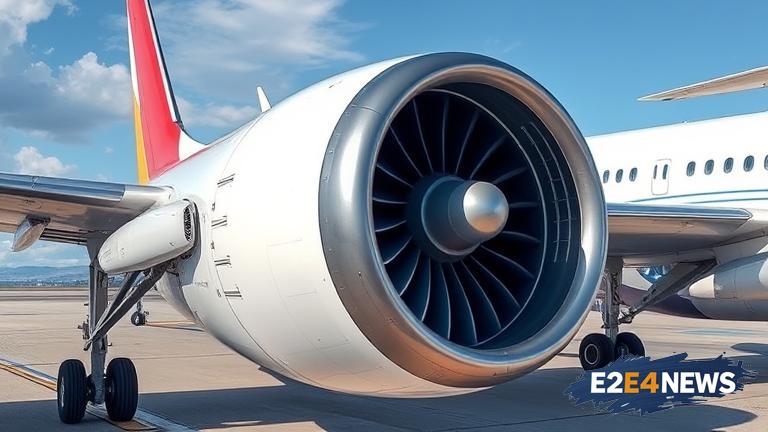The Federal Aviation Administration (FAA) has announced a proposal for new rules aimed at enhancing the safety of aircraft engines. The proposed rules, which are currently open for public comment, seek to reduce the risk of engine failures and improve overall aviation safety. According to the FAA, the new rules would require aircraft engine manufacturers to implement more robust design and testing standards, as well as enhance their quality control processes. The proposed rules would also require engine manufacturers to provide more detailed information about their products, including performance data and maintenance requirements. The FAA believes that these new rules would help to reduce the number of engine-related accidents and incidents, which have been a major concern for the aviation industry in recent years. The proposed rules are the result of a comprehensive review of aircraft engine safety, which was conducted by the FAA in response to a series of high-profile engine failures. The review identified several areas where safety could be improved, including the design and testing of engine components, as well as the maintenance and inspection of engines. The FAA has proposed a number of specific changes, including the requirement for engine manufacturers to conduct more rigorous testing of their products, including tests of engine performance under various operating conditions. The proposed rules would also require engine manufacturers to provide more detailed information about their products, including data on engine performance, maintenance requirements, and potential failure modes. Additionally, the proposed rules would require airlines and other aircraft operators to implement more robust maintenance and inspection procedures, including the use of advanced diagnostic tools and techniques. The FAA believes that these changes would help to reduce the risk of engine failures and improve overall aviation safety. The proposed rules are currently open for public comment, and the FAA is seeking input from industry stakeholders, including aircraft manufacturers, airlines, and maintenance providers. The comment period is expected to last for several months, after which the FAA will review the comments and finalize the new rules. The FAA has stated that it expects the new rules to be implemented within the next two years, although the exact timeline will depend on the outcome of the public comment period. The proposed rules have been welcomed by many in the aviation industry, who believe that they will help to improve safety and reduce the risk of engine-related accidents. However, some have expressed concerns about the potential cost and complexity of implementing the new rules, and the impact that they may have on the industry. The FAA has stated that it will work closely with industry stakeholders to ensure that the new rules are implemented in a way that is fair and effective. The proposed rules are part of a broader effort by the FAA to improve aviation safety, which includes a range of initiatives aimed at reducing the risk of accidents and incidents. The FAA has stated that it is committed to making aviation safer, and that it will continue to work with industry stakeholders to achieve this goal. The proposed rules are an important step forward in this effort, and they have the potential to make a significant impact on aviation safety. The FAA has a long history of working to improve aviation safety, and it has implemented a range of rules and regulations over the years aimed at reducing the risk of accidents and incidents. The proposed rules are the latest example of this effort, and they demonstrate the FAA’s ongoing commitment to making aviation safer. The aviation industry is a critical part of the global economy, and it plays a vital role in facilitating trade, commerce, and tourism. However, it also poses significant safety risks, and it is the responsibility of regulators like the FAA to ensure that these risks are mitigated. The proposed rules are an important step forward in this effort, and they have the potential to make a significant impact on aviation safety. The FAA has stated that it will continue to work with industry stakeholders to implement the new rules, and to ensure that they are effective in reducing the risk of engine-related accidents. The proposed rules are a major development in the aviation industry, and they have the potential to make a significant impact on safety. They demonstrate the FAA’s ongoing commitment to making aviation safer, and they are an important step forward in this effort.
